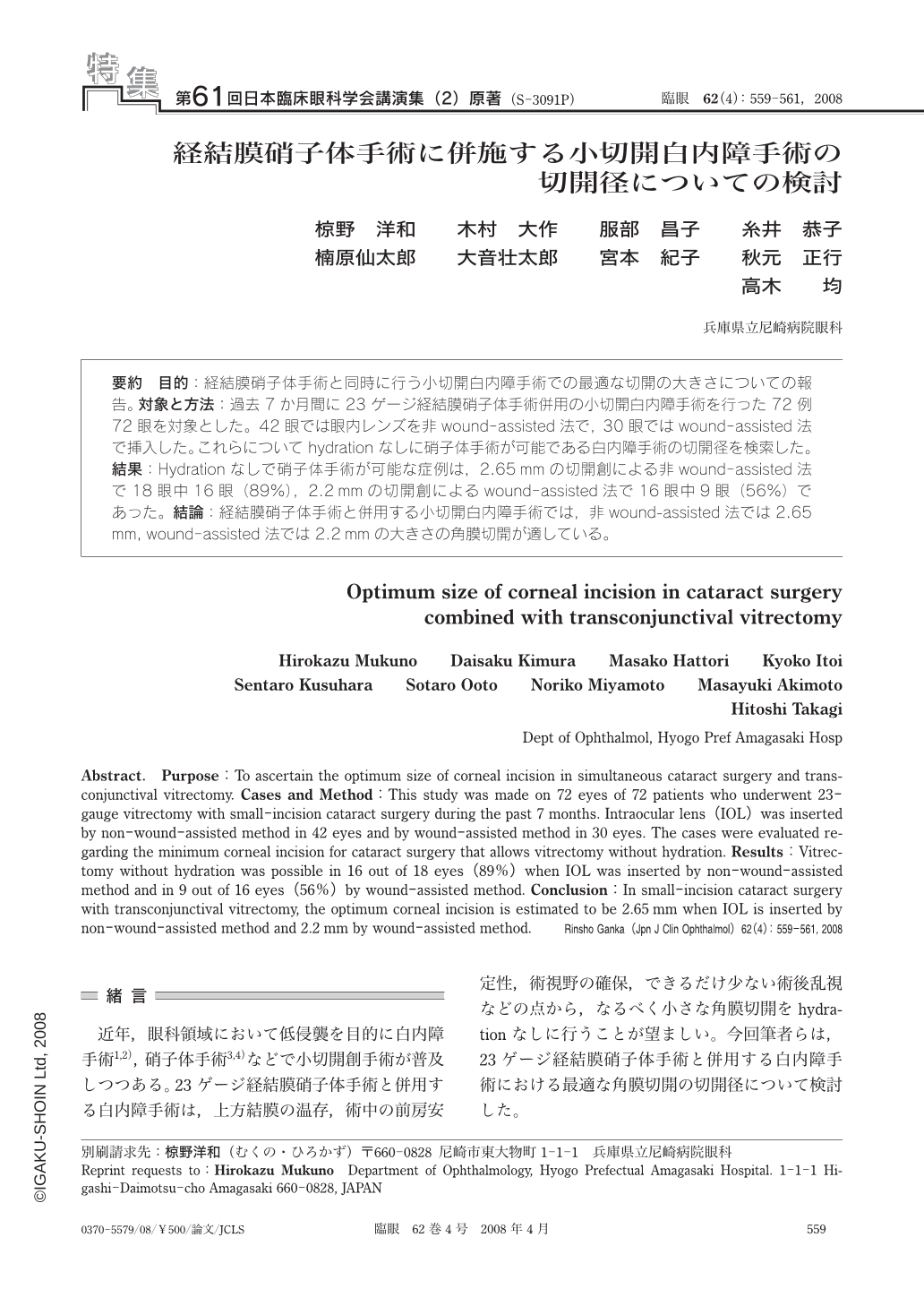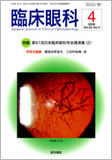Japanese
English
- 有料閲覧
- Abstract 文献概要
- 1ページ目 Look Inside
- 参考文献 Reference
要約 目的:経結膜硝子体手術と同時に行う小切開白内障手術での最適な切開の大きさについての報告。対象と方法:過去7か月間に23ゲージ経結膜硝子体手術併用の小切開白内障手術を行った72例72眼を対象とした。42眼では眼内レンズを非wound-assisted法で,30眼ではwound-assisted法で挿入した。これらについてhydrationなしに硝子体手術が可能である白内障手術の切開径を検索した。結果:Hydrationなしで硝子体手術が可能な症例は,2.65mmの切開創による非wound-assisted法で18眼中16眼(89%),2.2mmの切開創によるwound-assisted法で16眼中9眼(56%)であった。結論:経結膜硝子体手術と併用する小切開白内障手術では,非wound-assisted法では2.65mm, wound-assisted法では2.2mmの大きさの角膜切開が適している。
Abstract. Purpose:To ascertain the optimum size of corneal incision in simultaneous cataract surgery and transconjunctival vitrectomy. Cases and Method:This study was made on 72 eyes of 72 patients who underwent 23-gauge vitrectomy with small-incision cataract surgery during the past 7 months. Intraocular lens(IOL)was inserted by non-wound-assisted method in 42 eyes and by wound-assisted method in 30 eyes. The cases were evaluated regarding the minimum corneal incision for cataract surgery that allows vitrectomy without hydration. Results:Vitrectomy without hydration was possible in 16 out of 18 eyes(89%)when IOL was inserted by non-wound-assisted method and in 9 out of 16 eyes(56%)by wound-assisted method. Conclusion:In small-incision cataract surgery with transconjunctival vitrectomy, the optimum corneal incision is estimated to be 2.65mm when IOL is inserted by non-wound-assisted method and 2.2mm by wound-assisted method.

Copyright © 2008, Igaku-Shoin Ltd. All rights reserved.


